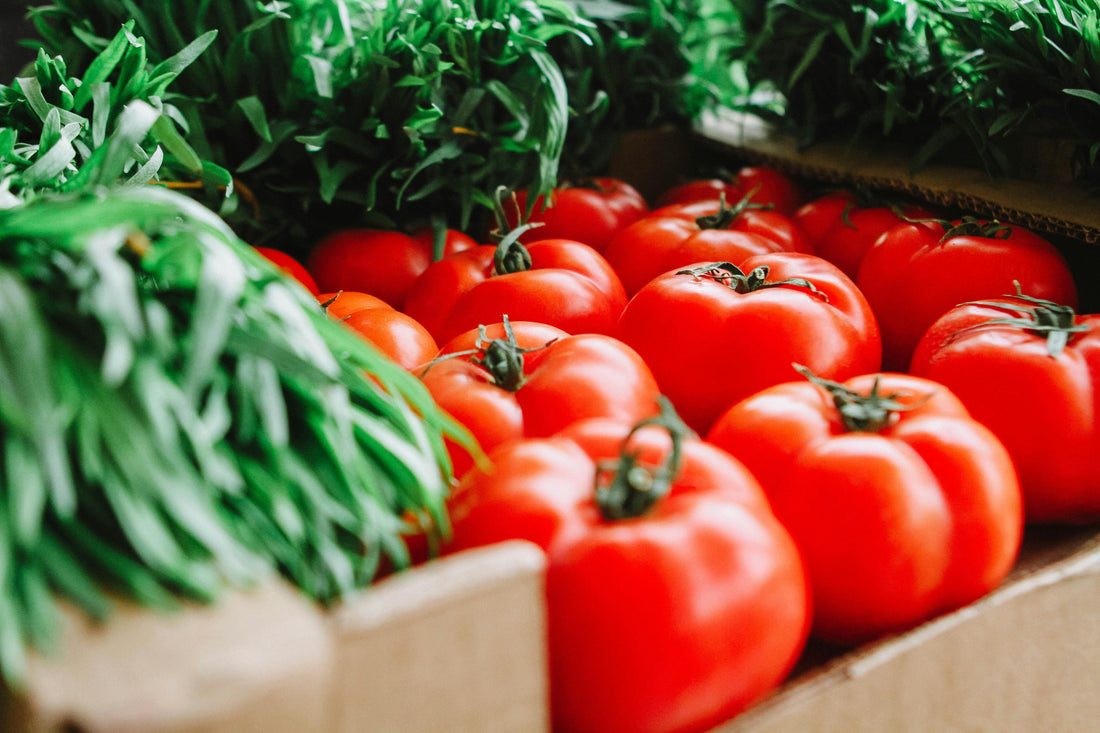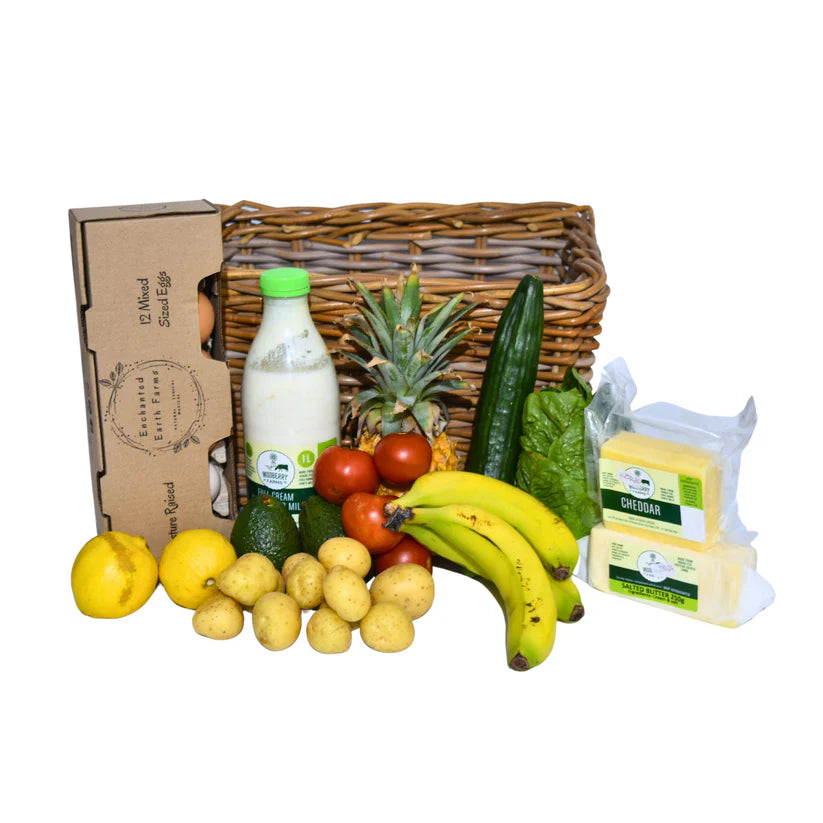Article Summary:
- Choosing the freshest vegetables and storing them correctly according to their specific needs are crucial for preserving their nutrient content. Using airtight containers and appropriate storage methods, such as refrigerating leafy greens and keeping root vegetables in a cool, dark place, helps maintain their nutritional value.
- Minimizing the time between cutting and cooking vegetables, as well as using nutrient-preserving cooking methods like steaming, microwaving, and sauteing with healthy oils, can help retain essential vitamins and minerals. Cutting vegetables just before cooking and incorporating cooking water into dishes can also prevent nutrient loss.
- Including a variety of vegetables in your diet ensures a broad spectrum of nutrients. Combining vegetables with healthy fats and other nutrient-rich foods can enhance nutrient absorption. Consuming vegetables soon after purchase and blanching and freezing excess produce are effective strategies to maximize their nutritional benefits.
Fresh vegetables are a cornerstone of a healthy diet, packed with essential vitamins, minerals, and antioxidants. However, the nutrient content of these vegetables can decline over time, influenced by various factors such as storage methods, handling, and the type of vegetable. Understanding how long fresh vegetables retain their nutrients is crucial for maximizing their health benefits. This article explores the key factors affecting nutrient retention in fresh vegetables, compares the longevity of different types, and provides tips on how to store and handle vegetables to preserve their nutritional value for as long as possible.
Factors Influencing Nutrient Retention in Fresh Vegetables
The nutrient retention in fresh vegetables is influenced by several factors, including the time elapsed since harvest, storage conditions, handling practices, and the type of vegetable. The nutritional value of vegetables begins to diminish as soon as they are harvested. Enzymatic activities, respiration, and exposure to light and air can lead to the gradual loss of vitamins and other nutrients. For instance, spinach can lose up to 90% of its vitamin C content within 24 hours if not stored properly. The fresher the vegetable, the higher its nutrient content will be, making it important to consume vegetables soon after purchase.

Shop 250g Cheddar Cheese at Orchard Food
Proper storage is crucial for maintaining the nutrient content of fresh vegetables. Temperature plays a significant role, with cooler temperatures generally slowing down nutrient degradation. Vegetables like leafy greens should be stored in the refrigerator to maintain their nutritional value, while root vegetables like potatoes and onions fare better in a cool, dark, and dry place. Humidity levels also matter; too much moisture can promote mold and spoilage, while too little can cause vegetables to wilt and lose nutrients. The way vegetables are handled can also impact their nutrient retention. Rough handling, bruising, and cutting can accelerate nutrient loss due to increased exposure to oxygen and enzymes that break down vitamins. It is advisable to wash vegetables only when ready to use them to avoid the introduction of excess moisture that can hasten spoilage. Additionally, keeping vegetables intact until just before cooking helps preserve their nutrient content.
Different vegetables have varying rates of nutrient degradation. For example, water-soluble vitamins like vitamin C and some B vitamins are more susceptible to loss than fat-soluble vitamins like vitamins A, D, E, and K. Leafy greens, broccoli, and bell peppers tend to lose nutrients faster compared to more robust vegetables like carrots, potatoes, and winter squash. Understanding the characteristics of each type of vegetable can help in planning their consumption to maximize nutritional benefits. By being aware of these factors and implementing proper storage and handling techniques, you can help ensure that your fresh vegetables retain their nutrients for as long as possible, thereby maximizing their health benefits.
Optimal Storage Methods to Preserve Nutrients in Vegetables
Preserving the nutrients in vegetables requires optimal storage methods that take into account factors like temperature, humidity, and light exposure. Refrigeration is generally the best method for most vegetables to slow down nutrient degradation and spoilage. Leafy greens, broccoli, and bell peppers should be stored in the crisper drawer of the refrigerator, ideally in perforated plastic bags to maintain adequate humidity while allowing some air circulation. This helps retain their vitamins and minerals while preventing wilting and mold growth. Vegetables like carrots, celery, and radishes can also be stored in the refrigerator but should be kept in sealed plastic bags or containers to maintain moisture and prevent them from becoming limp.
Root vegetables, such as potatoes, onions, and garlic, require a different storage approach. These vegetables should be kept in a cool, dark, and dry place, such as a pantry or cellar, where the temperature is consistent and humidity is controlled. Exposure to light can cause potatoes to turn green and develop toxic compounds, while excess moisture can lead to sprouting and mold growth. Storing these vegetables in paper bags or baskets that allow for airflow can help extend their shelf life and preserve their nutritional value. Sweet potatoes and winter squash also benefit from being stored in a similar environment, as they can become damaged by cold temperatures in the refrigerator.
Freezing is another effective method for preserving the nutrients in vegetables, particularly for those that may not be consumed quickly. Before freezing, most vegetables should be blanched, which involves briefly boiling them and then plunging them into ice water. Blanching inactivates enzymes that cause nutrient loss and helps maintain the vegetables' color, flavor, and texture. After blanching, vegetables should be thoroughly dried and then stored in airtight freezer bags or containers. Freezing is especially useful for preserving vegetables like peas, corn, and green beans, which can maintain their nutritional quality for several months when stored at the correct temperature.

Shop 1kg Organic Red Onions at Orchard Food
In addition to these methods, it is important to handle vegetables gently to avoid bruising and damage, which can accelerate nutrient loss. Washing vegetables just before use, rather than before storage, can help prevent the introduction of excess moisture that promotes spoilage. Keeping vegetables whole and uncut until ready to use also helps preserve their nutrients, as cutting increases exposure to air and light, leading to faster nutrient degradation. By following these optimal storage methods, you can effectively preserve the nutritional value of your vegetables, ensuring that they remain a healthy and beneficial part of your diet.
Comparing Nutrient Longevity Among Different Vegetables
Comparing the nutrient longevity among different vegetables reveals that not all vegetables retain their nutrients at the same rate. Factors such as water content, structure, and type of nutrients can influence how long a vegetable maintains its nutritional value after harvesting.
Leafy greens, such as spinach and kale, are highly nutritious but also highly perishable. They tend to lose their vitamin C and other antioxidants quickly, especially when exposed to air and light. For instance, spinach can lose up to 90% of its vitamin C content within 24 hours of being stored at room temperature. Refrigeration can slow this process, but even under optimal conditions, leafy greens should ideally be consumed within a few days to maximize their nutritional benefits.
Cruciferous vegetables, like broccoli, Brussels sprouts, and cauliflower, generally have a longer nutrient retention period compared to leafy greens. These vegetables are rich in vitamins C and K, folate, and fiber. Broccoli, for example, can retain a significant portion of its vitamin C content for up to a week when stored in the refrigerator. However, the retention of other beneficial compounds, such as glucosinolates, can still decrease over time. Proper storage techniques, such as keeping these vegetables in perforated bags in the crisper drawer, can help extend their shelf life and nutrient retention.
Root vegetables, such as carrots, beets, and sweet potatoes, are known for their longevity and ability to retain nutrients over extended periods. Carrots, for instance, can maintain their beta-carotene content for several weeks when stored in a cool, dark, and humid environment. Sweet potatoes are similarly durable, retaining their vitamins A and C, potassium, and fiber for weeks to months when stored properly. The dense structure and lower water content of root vegetables contribute to their ability to preserve nutrients for longer durations compared to more delicate vegetables.
Tomatoes and bell peppers, which are technically fruits but commonly treated as vegetables, also show varying nutrient longevity. Tomatoes can maintain their lycopene and vitamin C content for several days when stored at room temperature, but refrigeration can prolong their shelf life. Bell peppers, rich in vitamins C and A, can retain their nutrients for up to a week in the refrigerator. However, like many other vegetables, they begin to lose their nutritional value once they start to soften and deteriorate.
Overall, the longevity of nutrients in vegetables varies widely depending on the type of vegetable and storage conditions. Leafy greens require prompt consumption for maximum nutritional benefits, while cruciferous and root vegetables can maintain their nutrients for longer periods with proper storage. Understanding these differences can help you make informed choices about which vegetables to consume quickly and which can be stored for future use, ensuring you get the most out of their nutritional content.
The Impact of Harvest and Post-Harvest Handling on Nutrient Levels
The impact of harvest and post-harvest handling on nutrient levels in vegetables is a crucial factor in determining their nutritional quality by the time they reach consumers. From the moment a vegetable is harvested, its nutrient levels begin to fluctuate, and how these vegetables are handled immediately after harvest can significantly influence their nutrient retention.
The timing of harvest plays a pivotal role in the nutrient content of vegetables. Vegetables harvested at peak ripeness tend to have higher levels of vitamins, minerals, and antioxidants compared to those picked prematurely. For instance, tomatoes and bell peppers that are allowed to ripen fully on the plant exhibit higher concentrations of vitamin C and other beneficial compounds. Conversely, vegetables harvested too early may not reach their full nutritional potential and could degrade more quickly.
Post-harvest handling practices, including temperature control, humidity management, and physical handling, are critical in maintaining nutrient levels. Temperature is a key factor; many nutrients, especially vitamins, are sensitive to temperature fluctuations. Cold storage is essential for slowing down the metabolic processes that lead to nutrient degradation. For example, refrigeration can significantly slow the loss of vitamin C in leafy greens and cruciferous vegetables. However, some vegetables, like tomatoes and potatoes, are sensitive to cold and can suffer from cold-induced damage, leading to a loss of texture and flavor along with nutrients.
Humidity levels also influence nutrient retention. Vegetables are highly perishable and can lose water rapidly after harvest, leading to wilting and nutrient loss. Maintaining optimal humidity levels can help reduce water loss and preserve nutrients. For example, leafy greens benefit from high humidity environments that keep them crisp and nutrient-dense. Conversely, too much moisture can promote mold growth and decay, which can also lead to nutrient loss.
Physical handling and transportation are other critical factors. Bruising and damage during handling can accelerate the degradation of vitamins and antioxidants. Gentle handling and minimizing physical stress during transportation can help maintain the structural integrity and nutrient levels of vegetables. For instance, minimizing the handling of delicate vegetables like tomatoes and lettuce can reduce bruising and subsequent nutrient loss.
Post-harvest treatments, such as washing, packaging, and storage conditions, further impact nutrient retention. Washing vegetables immediately after harvest can remove surface contaminants and reduce spoilage, but excessive washing or exposure to water can leach water-soluble vitamins, such as vitamin C and B vitamins. Packaging that protects vegetables from light and air can help preserve their nutritional quality. For example, packaging materials that provide a barrier to oxygen can help retain the antioxidant content of vegetables like carrots and broccoli.
In summary, the harvest timing and post-harvest handling of vegetables significantly impact their nutrient levels. Optimal harvesting at peak ripeness, careful temperature and humidity control, gentle physical handling, and appropriate post-harvest treatments can all contribute to preserving the nutritional quality of vegetables from farm to table. Understanding these factors can help consumers choose the freshest, most nutrient-dense vegetables and maximize their health benefits.
Tips for Maximizing Nutrient Intake from Fresh Vegetables
Maximizing nutrient intake from fresh vegetables involves several key practices, from selection and storage to preparation and consumption. To begin with, choosing the freshest vegetables is crucial. When shopping, look for vibrant colors, firm textures, and absence of blemishes or signs of decay. Freshness often equates to higher nutrient content, as vegetables lose nutrients over time. Shopping at local farmers' markets or choosing seasonal produce can also ensure you are getting vegetables that haven't traveled long distances, which can lead to nutrient degradation.
Proper storage is essential for preserving the nutrients in fresh vegetables. Different vegetables have specific storage needs; for instance, leafy greens should be kept in the refrigerator in a high-humidity drawer to maintain their vitamin content, while root vegetables like potatoes and onions are best stored in a cool, dark place. Using airtight containers or vegetable-specific storage bags can help reduce exposure to air and moisture, both of which can accelerate nutrient loss. For vegetables that are sensitive to cold, like tomatoes and avocados, room temperature storage is preferable until they are fully ripe.
When it comes to preparation, minimizing the time between cutting and cooking can help preserve nutrients. Cutting vegetables exposes them to air and light, which can lead to oxidation and nutrient loss. Therefore, it’s best to cut vegetables just before cooking or eating. Washing vegetables thoroughly but gently before cutting can also remove surface contaminants without compromising their nutritional value. For certain vegetables, like carrots and potatoes, leaving the skin on can retain additional nutrients and fiber.
Cooking methods significantly affect the nutrient content of vegetables. Steaming and microwaving are generally the best methods for preserving vitamins and minerals, as these methods use less water and shorter cooking times compared to boiling. If boiling is necessary, using the smallest amount of water possible and incorporating the cooking water into soups or stews can help retain water-soluble vitamins like vitamin C and B vitamins. Sautéing with a small amount of healthy oil, such as olive oil, can help retain fat-soluble vitamins like A, D, E, and K, and can also enhance the absorption of these nutrients.
Combining vegetables in a meal can also enhance nutrient intake. For example, adding a source of healthy fat, such as avocado or nuts, to a salad can improve the absorption of fat-soluble vitamins. Pairing vitamin C-rich vegetables like bell peppers or broccoli with iron-rich plant foods like spinach can enhance the absorption of non-heme iron. Including a variety of vegetables in your diet ensures a broad spectrum of nutrients, as different vegetables provide different vitamins, minerals, and antioxidants.
Finally, consuming vegetables soon after purchase is ideal, as nutrient levels tend to decrease over time. Planning meals that incorporate fresh vegetables throughout the week can help ensure you are consistently benefiting from their nutritional value. If you find that you have more vegetables than you can consume before they spoil, consider blanching and freezing them. This process can preserve most of their nutrients and provide a convenient option for future meals.










